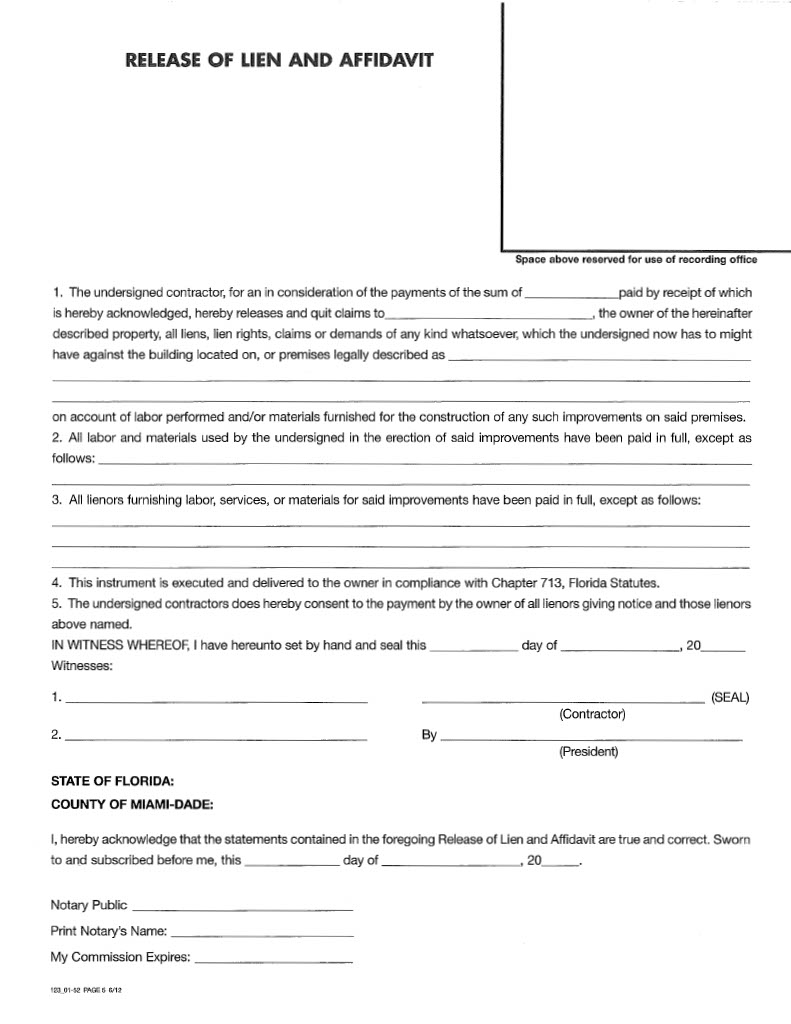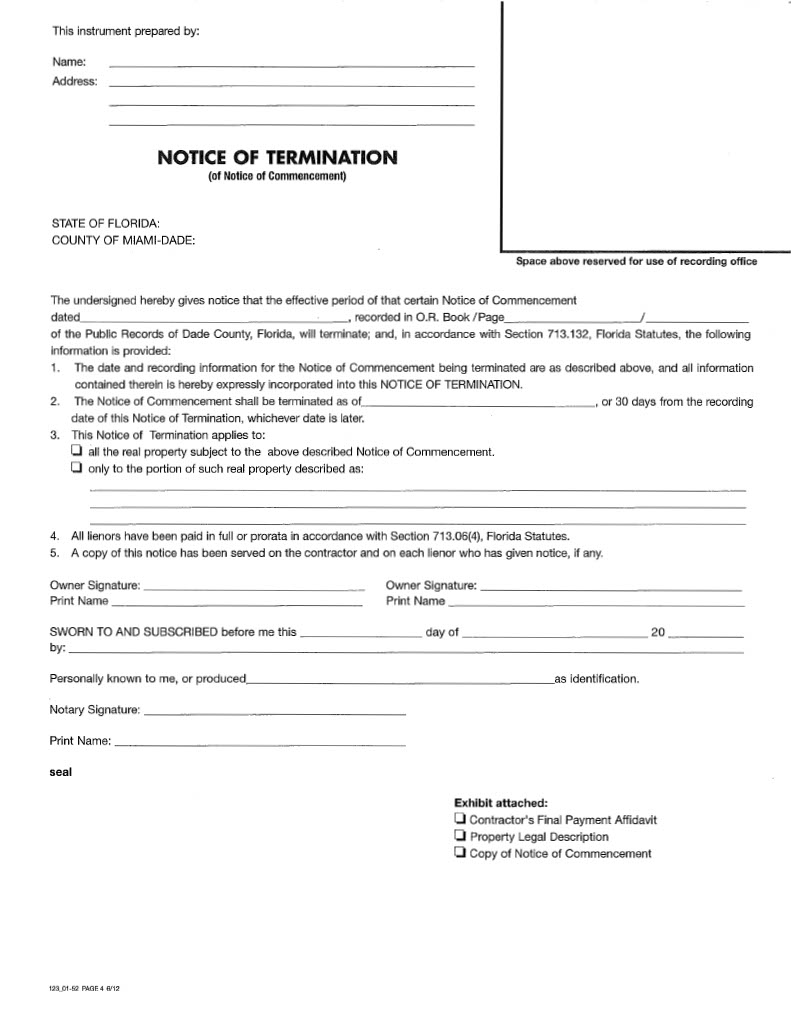Why Obtaining a Release of Lien and Notice of Termination is Important After Work Has Been Completed on Your Florida Property
If you’re a property owner in Florida, or you’re thinking about diving into real estate here, we are going to break down something that many homeowners overlook but is absolutely crucial after any construction or renovation work has been completed on your property. Release of Lien and Notice of Termination. These two legal documents can save you a lot of stress, headaches, and even money down the road.

WHAT IS A RELEASE OF LIEN?
In Florida, when you hire contractors, subcontractors, or suppliers to perform work on your property, they are entitled to file a Mechanic’s Lien if they haven’t been paid. This is a legal claim against your property.
So, after the job is completed, you want to make sure that any potential lien is released. A Release of Lien is a document signed by the contractor or supplier stating that they’ve been paid in full and no further claims will be made against your property. Essentially, it clears your property of any potential legal claims from the contractor.

WHAT IS A NOTICE OF TERMINATION?
In Florida, the Notice of Termination is used when a contractor ends their contract or completes the work. It’s typically filed to terminate any ongoing obligations, like payments or claims that could arise from unfinished work. It’s a clear signal that everything has been wrapped up and the contractor has officially ended their involvement with the project.
WHY BOTH ARE ESSENTIAL
- Protection from Future Claims: Without a Release of Lien, you could find yourself facing a lien months or even years down the road, even though you’ve already paid. A Notice of Termination adds an extra layer of protection by officially ending the relationship between the contractor and the property.
- Clearing Your Title: If you’re selling your property, you’ll want to make sure it’s free of any legal complications. A lien could affect your property’s title, making it much harder to close a sale.
- Peace of Mind: By getting a Release of Lien and a Notice of Termination, you’re essentially ensuring that no one can come back to you later demanding payment for unfinished or completed work that’s already been paid for.
These documents help prevent any surprises that could cost you time, money, and a lot of stress.
HOW TO OBTAIN A RELEASE OF LIEN AND NOTICE OF TERMINATION
- After the Work Is Completed: Make sure you ask your contractor or subcontractors for a Release of Lien once they finish the job and you’ve made your final payment. This is usually done in writing and can be filed with the county clerk if necessary.
- File the Notice of Termination: You’ll want the contractor to file the Notice of Termination once the work has been completed. This legally ends your contract and protects you from future obligations.
- Keep Records: Be sure to keep a copy of both documents for your records. If anything comes up later, you’ll have proof that the job was paid for and completed.
COMMON PITFALLS TO AVOID
- Don’t Rely on Verbal Agreements: Always get everything in writing. Don’t assume that just because a contractor says they’ve paid their suppliers or finished the job, that they have.
- Double-Check Your Lien Waivers: Sometimes, contractors or subcontractors may not provide a lien waiver immediately after payment. Be sure to follow up and get that document before you assume all is settled.
- Don’t Skip the Notice of Termination: Failing to file this notice can leave you open to ongoing obligations or confusion about the scope of work.
CONCLUSION
At the end of the day, getting a Release of Lien and a Notice of Termination is about protecting yourself, your property, and your investment. It’s one of the best things you can do to ensure that your project is fully wrapped up, and that no one comes knocking with unexpected claims.
If you have any questions, feel free to contact Tony Dubberly at 305-310-1661.
